So, you’re ready to train your dog!
Whether you’re a total dog newbie, you have signed up for an web-based dog training program (like our 30 Things to Teach Your Dog in 30 Days online course), or you are starting puppy school soon with a new fluffball, having the right dog training equipment is important for ensuring you get the results you want.
And we’re here to help! Below, we’ll cover the essential dog training gear you’ll need to get started, explore some fun options, and explain what training equipment you’ll probably want to avoid.
Must-Have Dog Training Equipment: Key Takeaways
- No matter how you’re training your dog, you’ll need a few pieces of equipment to help facilitate the process. This includes a collar, a standard 6-foot leash, a long line, treats, a treat bag, a clicker, and some sturdy walking shoes (for you).
- Additionally, there are a few items most owners will find helpful for training their pet, if not outright essential. This includes things like a crate, a training mat, a muzzle, and more.
- In addition to the items you’ll need and those you may want, there are a handful of training tools you should always avoid. This primarily includes aversive tools that will cause your pet pain or distress, such as prong or choke collars.
Essential Dog Training Equipment
While there are some types of dog training equipment that are optional, there are a few things just about every owner will need to teach their dog the basics. We’ll start by diving into these mandatory items.
1. A Dog Collar
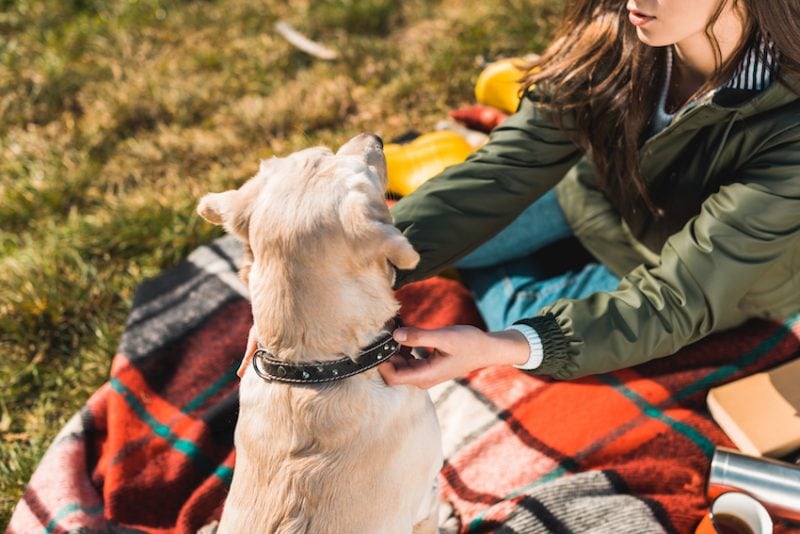
A collar is one of those obvious items that you already know dogs need — whether you’re training your pooch or not.
Why are collars so essential? Well for one, they can hold your dog’s ID tag to ensure you’ll be contacted if your pooch gets lost. They also offer an easy way to attach a leash for walks, and they provide an easy hand-hold option when you need to grab your dog (whether to keep them out of danger or prevent him from dive-bombing that chicken drumstick you dropped on the kitchen floor).
2. A Sturdy Leash
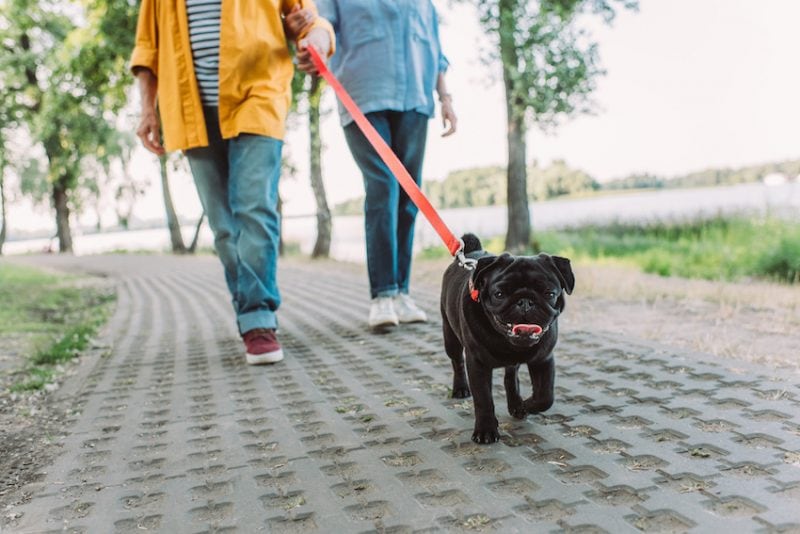
A sturdy leash is essential for allowing your dog to enjoy the great outdoors! Dogs love to go on walks, and a leash is what allows your four-footer to stroll safely alongside you.
Leashes come in all kinds of different lengths, materials, and patterns. A no-nonsense 6-foot nylon leash is the standard (and very affordable) choice, but you can also opt for a more colorful leash with some flair that matches you and your dog’s personality (Wolfgang Man & Beast has some really cool, colorful leashes and collars we are big fans of).
Heck, you can even make your own DIY dog leash if you have some spare time on your hands and feel crafty.
Just note that retractable dog leashes are not great for training. These tools can cause very serious injuries (think: a rope burn that’s bad enough to land you in the ER) if you grab one in a panic, and they don’t allow your dog to get as much feedback from you through the line.
Plus, retractable leashes kind of encourage pulling since your dog gets used to feeling that constant low-level tension on the leash line. So, if you’re having pulling problems, definitely ditch the retractable leash and opt for a no-pull harness instead (and — more importantly — work on teaching your dog not to pull during walks).
3. A Long Leash
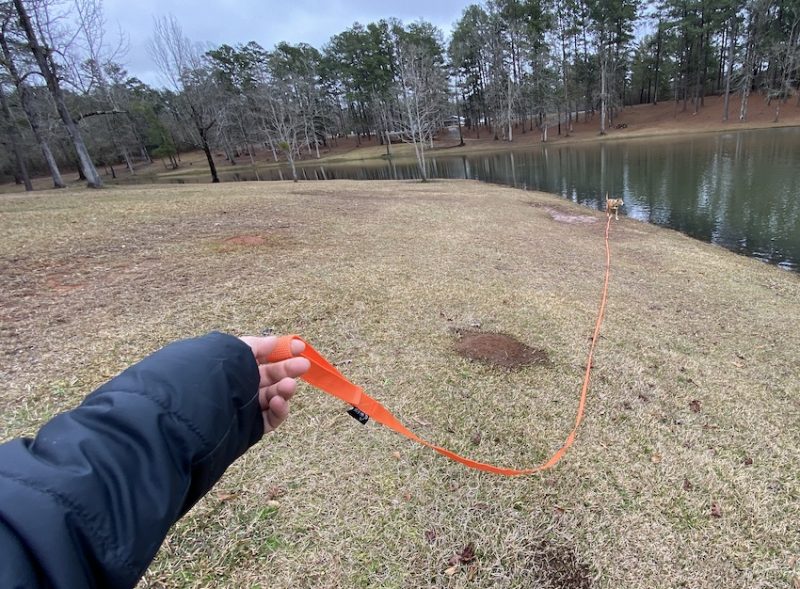
Long leashes are definitely some of the most helpful tools owners and newbie trainers often leave out of their training toolbox.
Long leashes (sometimes called long lines) are lightweight leashes that come in several ulta-long lengths, ranging from 20 to 100 feet in length or more!
Long lines are fantastic for giving your dog the sensation of off-leash action while still keeping him in check, and they’re powerful tools for working on your dog’s recall or off-leash manners. Plus they give your dog tons of freedom without requiring him to be perfectly trained.
4. Plenty of High-Value Treats
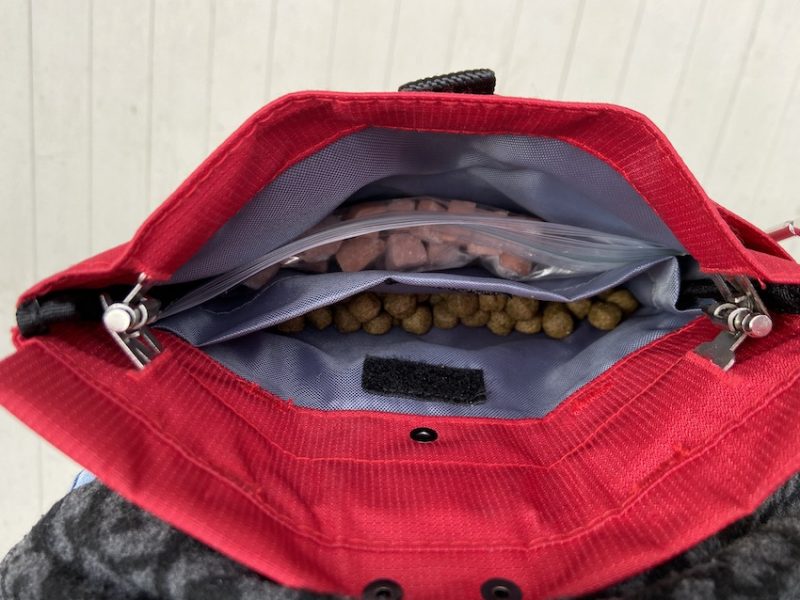
Good dog training is all about rewarding your dog for desired behavior. Reinforcing the behaviors you want means that your dog will do them — instead of those behaviors you aren’t so crazy about — more often!
While you can use a variety of reinforcing rewards in training (such as scritches, praise, and toys), high-value training treats tend to be the easiest to use and yield the best results for most dogs.
Just understand that we’re not talking about run-of-the-mill treats; we’re talking about good training treats — there’s a difference. What exactly constitutes a good training treat?
Well, they’re usually:
- Small in size, so your dog can eat them quickly before moving on to the next training task
- Moist or semi-moist, as crunchy treats take longer for your dog to consume and are generally less enticing
- Smelly, because dogs know what the good stuff is — the stinkier the better!
And no, your dog’s kibble is not good enough for most training work. You need special, tasty, novel treats to keep your dog’s attention and make what you’re asking him to do worth the effort
5. A Treat Pouch or Bag
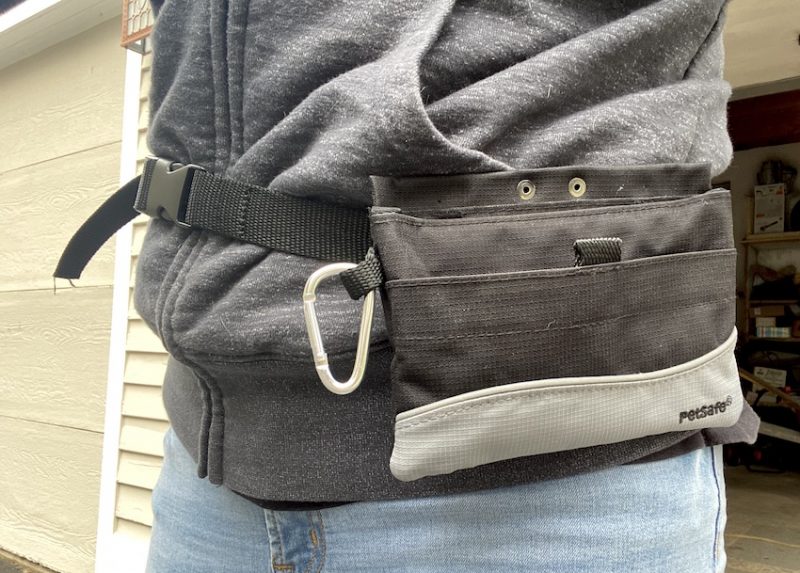
Sure, you could keep those treats mentioned above in your pocket. But the best, highest-value treats are smelly and moist. You probably don’t want them stinking up your pant pockets (and trust me, it gets even worse if you forget the treats are in there and toss your jeans in the wash).
Treat pouches provide an easy, convenient way to store treats and dispense them to your dog in rapid-fire fashion, which can be really important when working on difficult skills, precise training commands, and agility work.
6. A Training Clicker
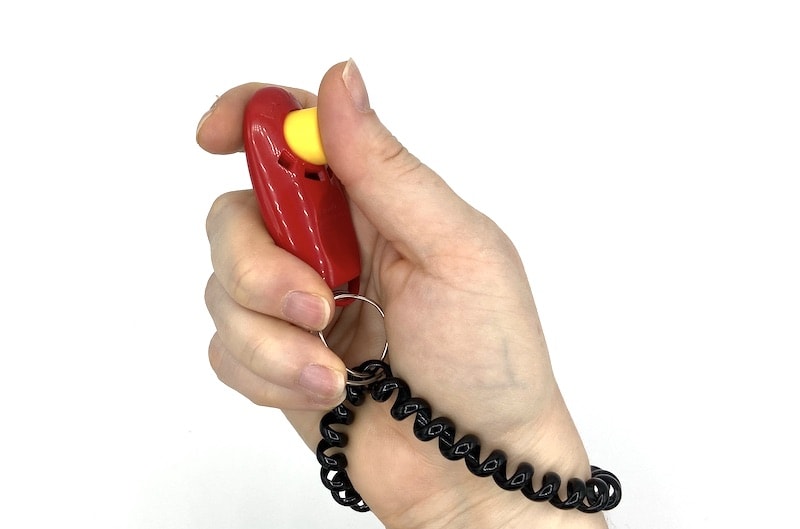
A clicker could probably fall under the optional training equipment section, but considering how useful (and cheap) they are, I’d really suggest grabbing one and practicing with one a bit before deciding if you’re a fan or not.
Clickers provide an instantaneous way of signaling to your dog that he’s done good. We have a full guide to clicker training here, but we’ll break down the basics of using a clicker below. There are essentially two steps to the process:
Step 1: Charging the Clicker
The clicker itself is meaningless to your dog — in order to give clicker power, you have to “charge” it. Basically, this means you have to teach your dog (“create an association” in training lingo) that the clicky sound equals a tasty treat in his mouth.
So, start off by just clicking the clicker and giving your dog a treat. Then do it again. And again, and again…and again. Then do it one more time for good measure.
You get the idea.
In fact, you’ll want to start every training session by charging the clicker, until the association is really nailed down and your doggo knows exactly what it means
Step 2: Training With the Clicker
Once you’ve charged the clicker, you can begin to wield its power and magic! A dog training clicker allows for tremendous precision, ensuring your dog knows exactly what he is being rewarded for.
For example, if you’re teaching your dog to sit, you’d click the clicker the moment his butt hits the ground. Then, follow up the clicker sound with a delicious treat.
If you didn’t have a clicker the scene might play out like this: Your dog sits, so you go to get a treat to reward him. But by the time you’ve pulled a treat out of your pouch, your pup has stood up and come over to you. Now, he doesn’t really know why he’s been rewarded — was it because he stood up? Because he approached you when you took out a treat? Just because he’s so handsome?
(Well, of course he is, but that’s not why you’re rewarding him right now.)
A clicker clarifies to your dog that he is being rewarded for getting that cute fluffy butt to touch the ground.
It should be noted that a clicker isn’t the only way to get this kind of exact training precision. Many trainers also employ the use of a “marker word,” which is a short, punchy word that functions in the same manner as the clicker.
A chirpy “yes” is a popular option. However, it’s important that your marker word always has the same intonation and tone, which makes it hard to use if multiple people are training your pooch (unlike a clicker which has a novel, unique sound and can’t be easily confused with any other noises).
You also want to avoid phrases like “good dog” as a marker word, since it’s a very overused term that friends, family members, or doting passersby might use, diluting the power of the word and rendering it meaningless.
7. Sturdy Walking Shoes (For You)
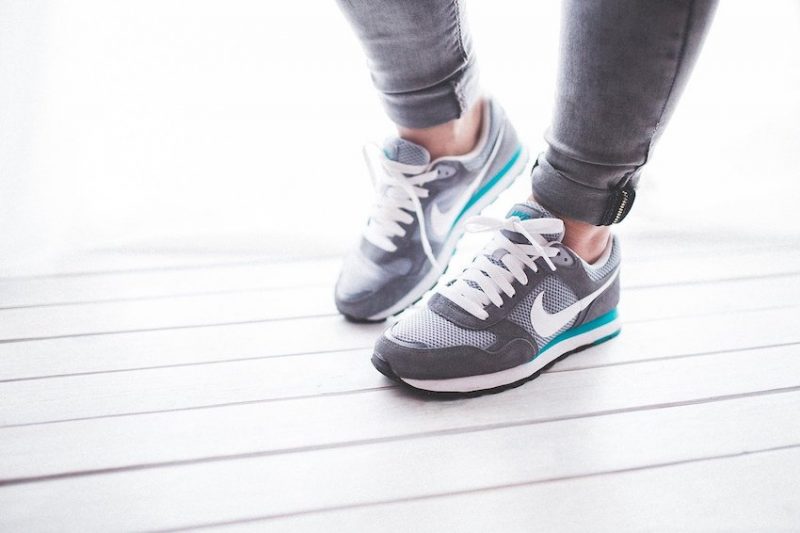
A lot of your training will involve walking — whether it’s circles in the backyard or long jaunts around the neighborhood. Gear up with some solid walking shoes so you can keep up with your excited canine! Your feet and back will thank you.
8. Plenty of Patience
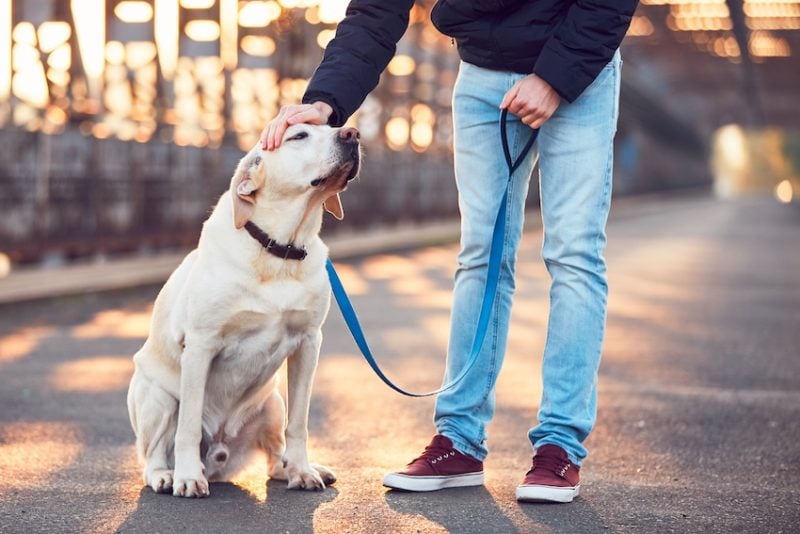
Training a dog ain’t always easy! Your precious pupper will likely display plenty of behaviors you don’t appreciate — like chewing your favorite shoes (it’s a stereotype for a reason) or barking hysterically at your neighbors.
Point being, your beloved little bestie will likely drive you crazy at some point in the training process.
Bet on it.
When this happens and you feel like you’re reaching the limits of your sanity, just take a deep breath and try to redirect him to the behavior you do want to see. For example, you could swap out your fancy dress shoes for an enticing dog chew, or distract your barker with a game of fetch.
Despite what the media and modern culture (American culture in particular) might have taught you, dogs are not born to serve humans.
Dogs are not mindless puddles of affection designed to cater to our every wish and whim. They aren’t tools to feed our egos or punching bags for your children. They are sentient animals who have their own opinions on how they’d like to spend their time, thank you very much.
Your job as your dog’s caretaker is to serve as his guidance counselor to the human world. Teach him what he can and can’t do in your home or in public. But teach him all this knowing that much of what you’ll need to ask him to do is at odds with his natural instincts and not always easy.
Also, don’t be afraid to let your dog just be a dog sometimes!
You can’t completely stop a dog from chewing (nor should you try to — it’s really good for his mental health)! Just make sure he is choosing an appropriate dog chew and not your furniture.
Similarly, instead of punishing your pooch for digging up your flowerbeds, create a pup-friendly sandbox for him. This way, he can dig away without causing you unnecessary headaches.
For that matter, don’t force your dog to stay in a heel position for your entire walk — let him sniff and explore his surroundings (so long as he doesn’t yank you back and forth across the street — he needs to remain reasonably well-behaved during walks for safety’s sake).
Bottom line: If this is your first time training a dog you’ll need plenty of patience, especially at the beginning of your training work. Heck, this is even true for owners who do have some training experience, but are just working with a particularly perplexing pupper
But it’ll all be worth it eventually, and you’ll likely learn a lot working with your pooch (I know I did).
Optional Bonus Dog Training Gear
Having discussed the things just about every pet parent needs, we can move on to the optional items you probably also want in your dog-training toolbox. Don’t feel like any of these items are mandatory, but understand that many trainers and owners have found them quite helpful for a reason.
A Harness
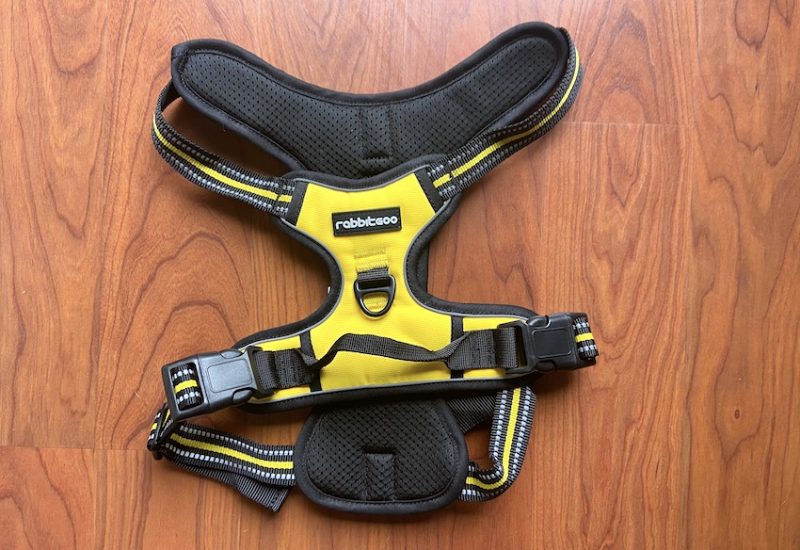
Some would argue that a harness is mandatory, but if you can walk your dog safely on a collar, a harness probably isn’t necessary.
However, dog harnesses are a good alternative to neck collars for dogs with delicate tracheas, as well as dogs who can easily wriggle their heads out of a collar when out on a walk. Some harnesses also offer bonus features, such as front-clip options to prevent pulling and handles you can use to help your pupper scamper up rocks or other obstacles while hiking.
And some owners just prefer the look and feel of a harness over a traditional collar.
If you opt to use a harness instead of a collar, you’ll want to be sure to clip an ID tag to it. And this means you’ll also want to keep his harness on most of the time if he’s a flight risk.
A Training Mat
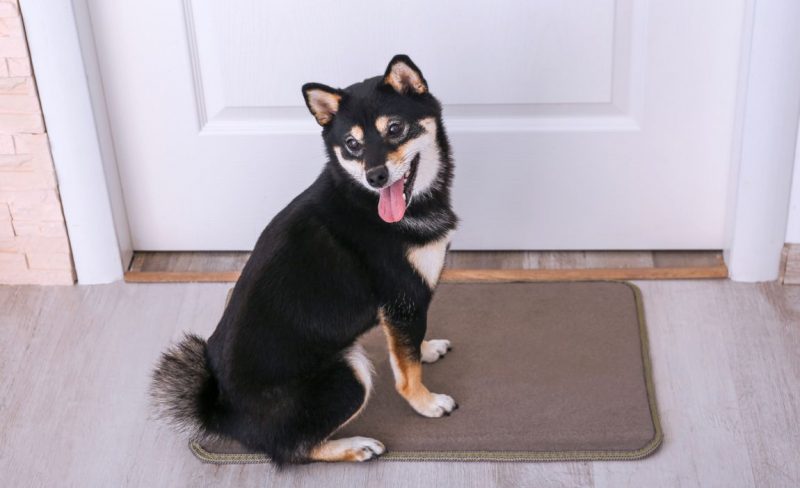
A mat is an optional training tool for those who want to teach their dog a “place” command through mat training. In other words, it’s somewhere your canine can chill whenever necessary, such as when you’re cooking dinner or greeting people at the front door.
Mat training can also be beneficial if you plan on taking your dog to cafes, breweries, or any other public locations where you’ll want him to kick back and relax
Your dog’s mat needn’t be fancy — a regular ‘ol bath mat will work splendidly.
Check out our video below for the basics of dog mat training!
A Crate
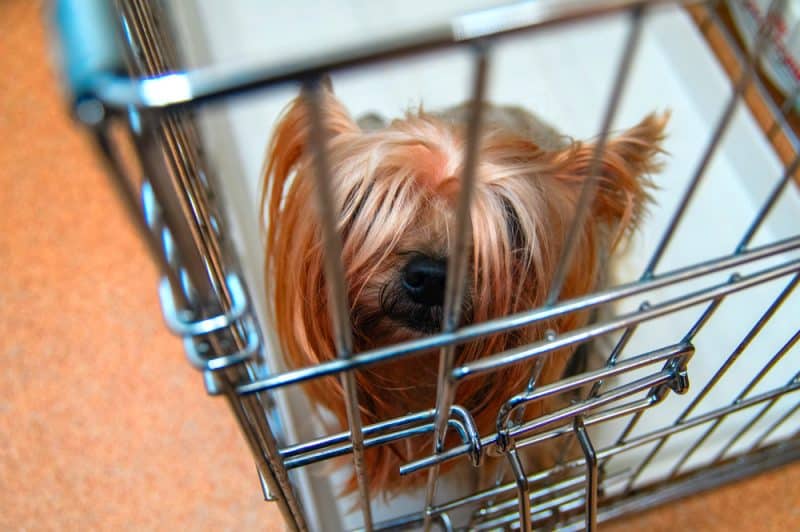
Believe it or not, crate training is not essential. It’s something a lot of owners pursue, but it’s by no means required.
Crate training can be useful if you plan on boarding or traveling with your dog at any point in the future. Some dogs also like having a crate as their own private special space. But, when it comes to preventing doggo destruction while you’re away, indoor dog gates or X-pens work just as well and are generally considered more humane.
Crates can also be helpful for house training pups, but you must still use them compassionately — don’t just lock your pooch up for hours at a time.
Dogs are not den-dwelling animals.
This is a common misconception that many believe supports the necessity of crate training, but domestic dogs are very different from wolves and differ in this manner. Plus, wolves only use dens when they are whelping pups that can’t yet travel — they don’t live in them full-time.
A Muzzle
Muzzles aren’t essential training tools, but they are pretty darn handy. In fact, personally, I think muzzles are more useful than crates in many cases.
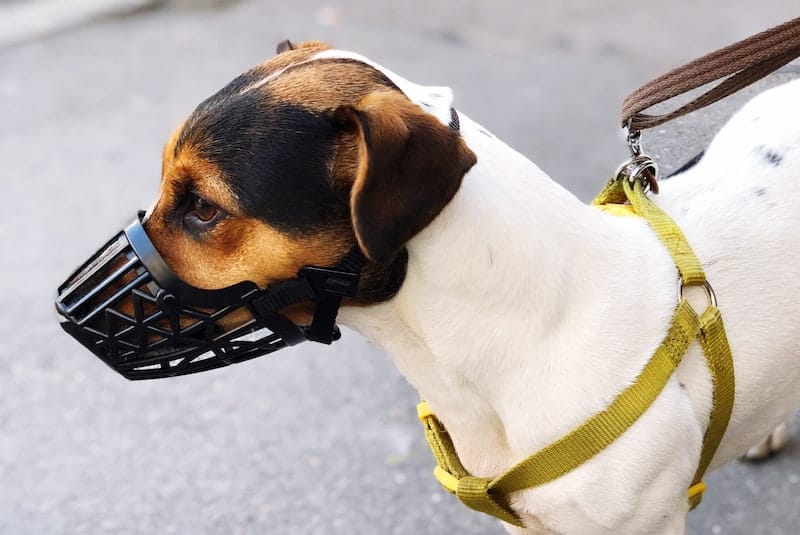
It’s a common misconception that muzzles are only for bad dogs. In reality, muzzles are incredibly versatile safety tools that may allow your dog to enjoy situations and environments that might normally be dangerous.
For example, socializing an adult dog of unknown origins with children and other dogs can be precarious. Or it might be just fine — you won’t know until you try, but that’s a pretty high-stakes game of poker to play.
The good news is that, with a proper fitting muzzle, you can rest easy and never even have to entertain the worst-case scenario.
Just understand that not all muzzles are made equally — some are comfy and safe for dogs to wear for extended periods, and others are only useful for emergencies or brief grooming sessions. Proper training muzzles offer enough slack for your dog to pant, drink water, and even accept treats while wearing it! There are even DIY dog muzzles you can construct yourself.
An Indoor Gate (or Two)
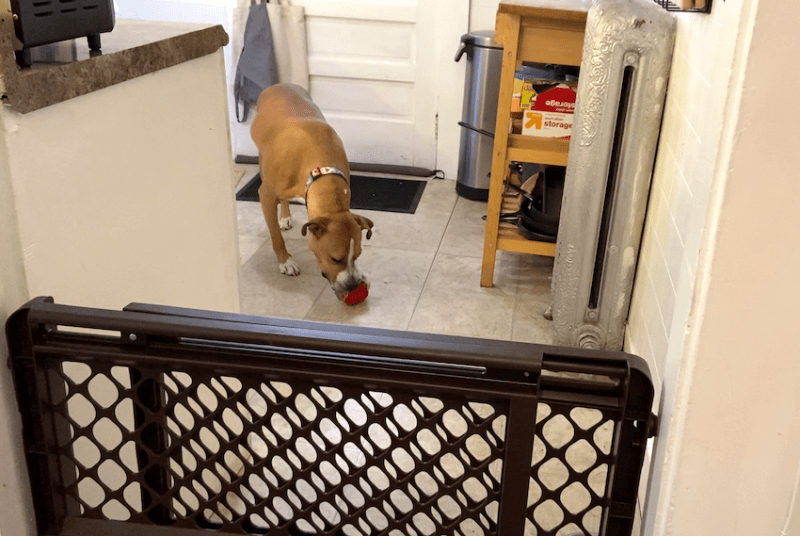
Setting yourself up with some indoor dog gates can save you a lot of future headaches. No new dog or puppy should ever have free access to an entire house — there’s just too much trouble your four-footer can get into. You have to learn how much your new doggo can be “trusted” before letting him have free reign of your house.
Start off by isolating your pet in one dog-safe area with plenty of safe things to chew, comfy spots to lay, and entertaining items to investigate. He can have access to other areas of the house, so long as you’re playing chaperone. As your dog learns the way of the house, you can allow him access to additional spaces.
Plus, gates are great management tools for many behavior issues, from jumping on guests to nipping when excited. They can also ensure that visitors keep an appropriate distance from your fearful pooch, without requiring the poor pupper to be confined to a cramped crate.
We’ve covered many of the most helpful dog-training tools already, but there are scads of others that some owners and trainers find helpful. Again, none of these are strictly necessary, but they’re all consistent with positive-only training methods and there is no harm in trying them!
Even if they don’t work for you and your doggo, they can serve as yet another way to enrich your pup’s life and keep his brain busy!
- Dog Whistle: Whistles provide an alternative way to communicate with your dog, especially over long distances.
- Potty Bells: Potty bells or “doggie door bells” allow your dog to tell you when he’s gotta go, and they make house-training easier.
- Tie-Downs: Tie-downs are useful for keeping your dog close to you when you need to prevent him from getting into mischief.
- Heel Sticks: Heel sticks are helpful tools (kinda like “headless” golf clubs) for teaching your dog proper “heel” position.
- KONG: Kongs (and similar toys) can be filled with tasty things or used on their own as a fun reward. They’re also helpful for keeping your pup busy and occupied.
- Fetch Training Toy (Bumper): Fetch training toys can serve as a reward for fetch-obsessed dogs, and many are also suitable for moderate chewing.
- Training Targets: Targets are great for teaching your dog skills like nose-touches, which can help refocus your dog when distracted.
Dog Training Tools You Do NOT Need (or Want)
As with so many other things, learning to train your dog not only means assembling the things you need, but it also means learning about those things you don’t need. In fact, we’d go as far as to say you want to actively avoid these tools.
A Prong Collar
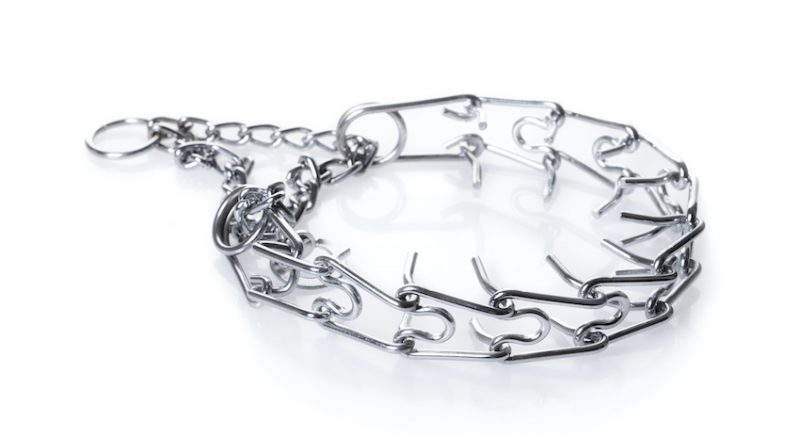
Prong collars are tools employed by some “balanced” dog trainers for working on things like pulling or leash reactivity. They rely on positive punishment, which is a quadrant of learning that involves adding (aka the “positive” part of positive punishment) negative sensations to decrease the likelihood of an unwanted behavior.
In other words, these types of trainers use prong collars and similar tools to do something unpleasant when their dog does something undesirable. Think of it like smacking your kiddo’s hand when he or she tries to touch something dangerous.
The issue is, these tools can cause physical and emotional damage to your dog, from trachea injuries, increasing fear and aggression, to eroding trust between you and your dog. See our full article on prong collars for a more detailed explanation of these controversial tools.
A Choke Collar
See above. Just no.
In fact, while choke or chain collars may seem gentler than prong collars, they may actually be more dangerous — particularly in untrained hands.
An E-Collar
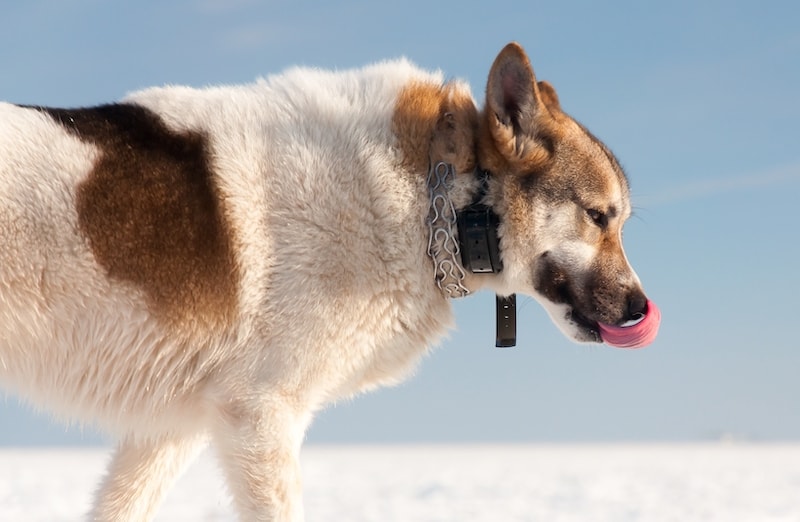
E-collars are a very common traditional training tools, but they’re also a bad idea. E-collars are placed around your dog’s neck during training. Then, you’d trigger a small electric shock when your dog exhibits an undesirable behavior or failing to follow a command.
When used appropriately, e-collars don’t cause serious physical damage, but the emotional harm they cause can still be significant, increasing fear, stress, and wounding the relationship with your dog.
While it’s true that some dogs can handle e-collar training, others (especially sensitive dogs) can’t. In fact, e-collars can cause a dog to “shut down” completely. Regardless of whether or not your dog is capable of handling rougher training tools like e-collars, K9 of Mine does not support the use of positive punishment or relying on pain to train pets.
Plenty of peer-reviewed, empirical studies have shown that positive reinforcement-based dog training is just as effective as e-collar training, and it creates fewer welfare concerns. Further, some research has demonstrated that dogs exhibit higher levels of stress and fearful body language in response to shock collar use.
Even with responsible, limited e-collar use, the associations your dog builds are not limited to your desired goals.
For example, while you may be able to use an e-collar to teach your dog that chewing on your shoes is bad (since the dog learns to associate the unpleasant sensation of a shock with chewing on a shoe), he may also build the association that the action of chewing itself is bad.
On the contrary, the act of chewing is a natural, self-soothing behavior for dogs. So, you definitely don’t want to discourage chewing as a whole.
Even worse, you may also end up accidentally teaching your dog that your presence results in pain. And that’s definitely not a great basis for life-long companionship!
Some folks like to use e-collars for recall training, but in that case, a sturdy dog whistle can be a great shock collar alternative, helping call your dog to your side without issuing pain.
***
Well, that about does it! You should now have all the dog training gear you need to get started on working with your dog. Did you learn anything from this article? Is there any dog training equipment we included here that surprised you? Anything you think we overlooked? Let us know in the comments!
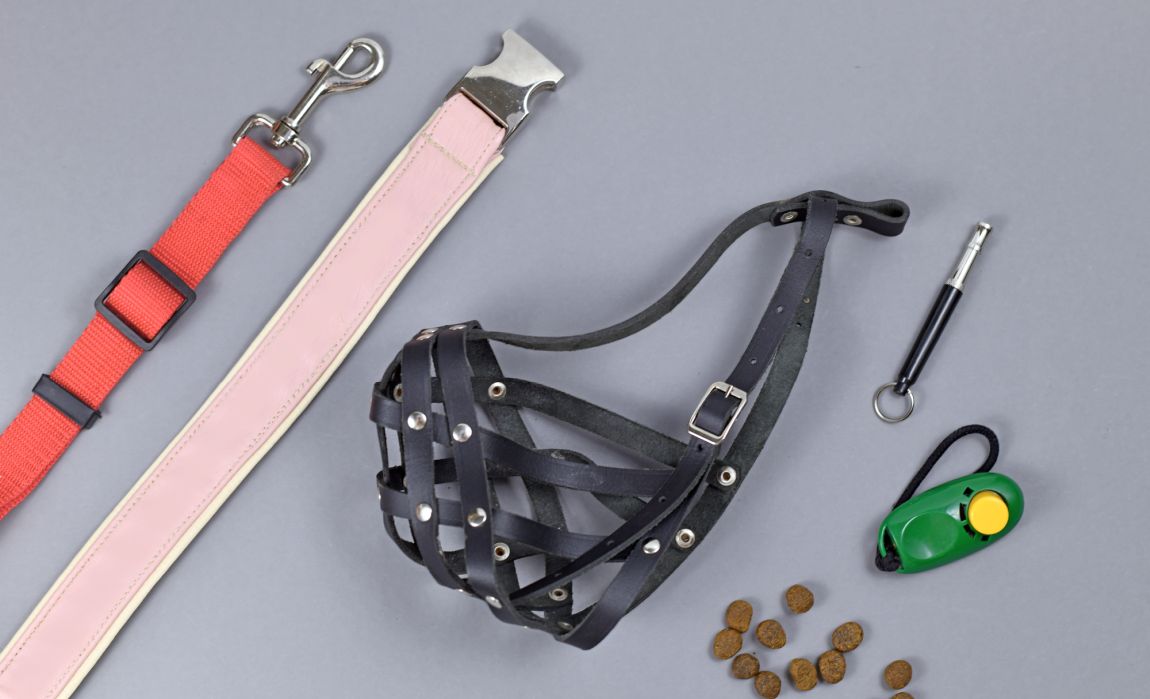

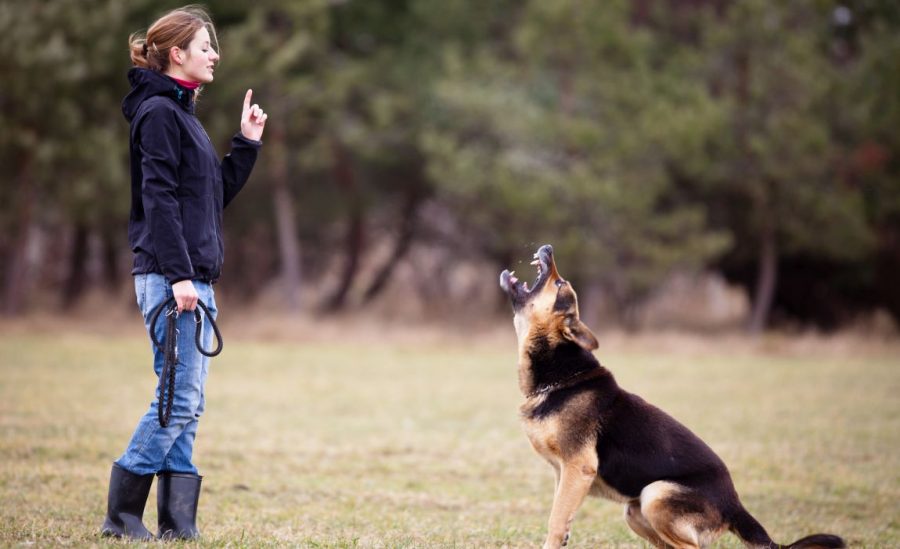


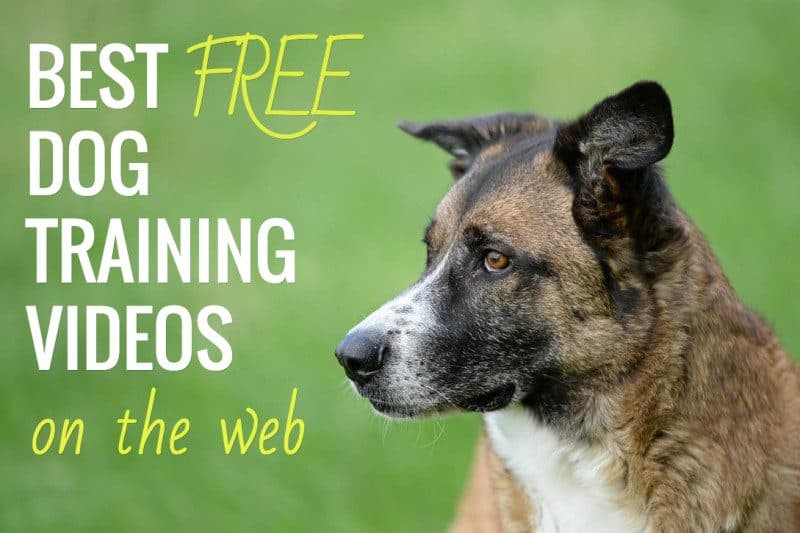

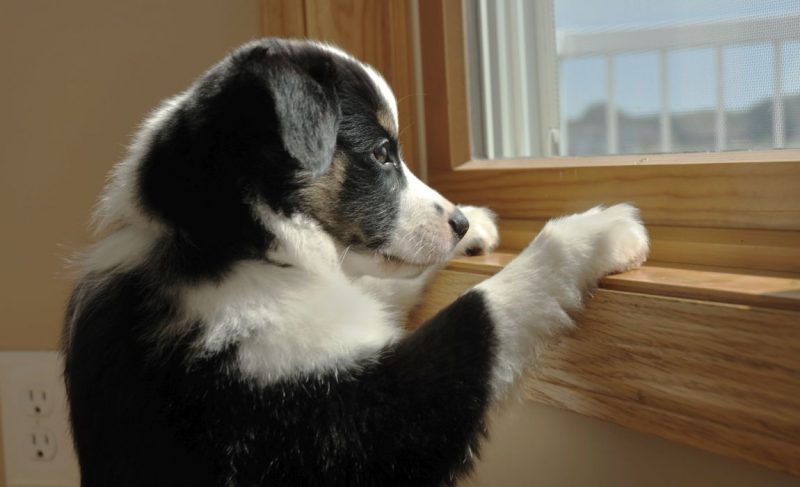
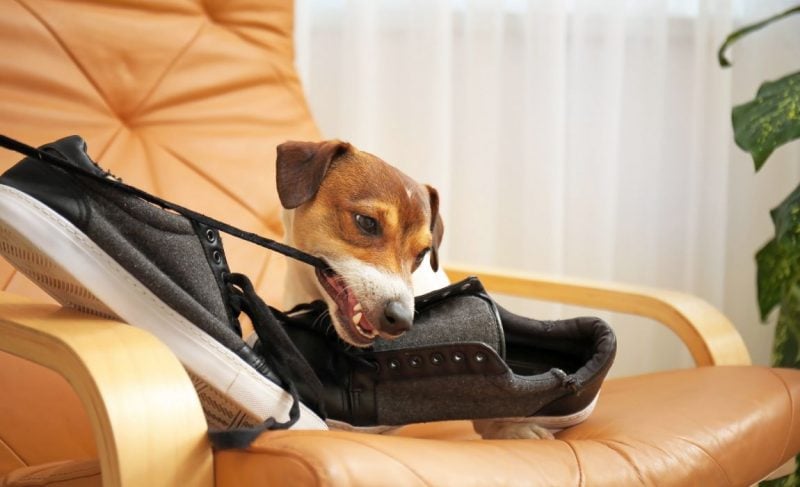
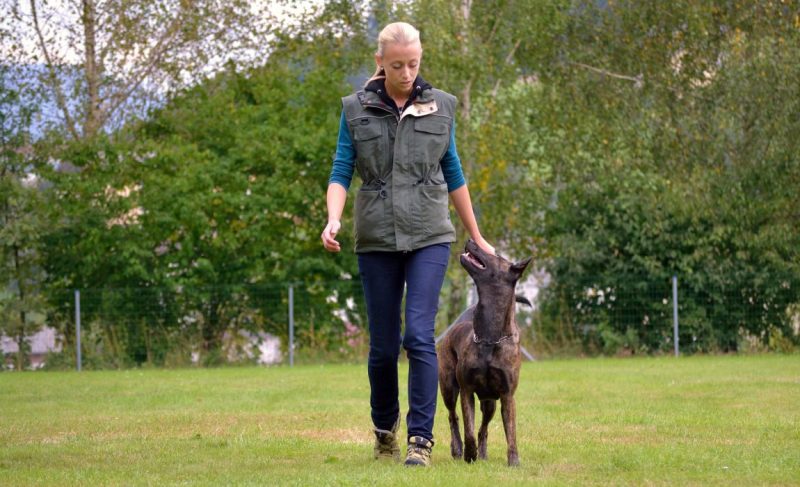
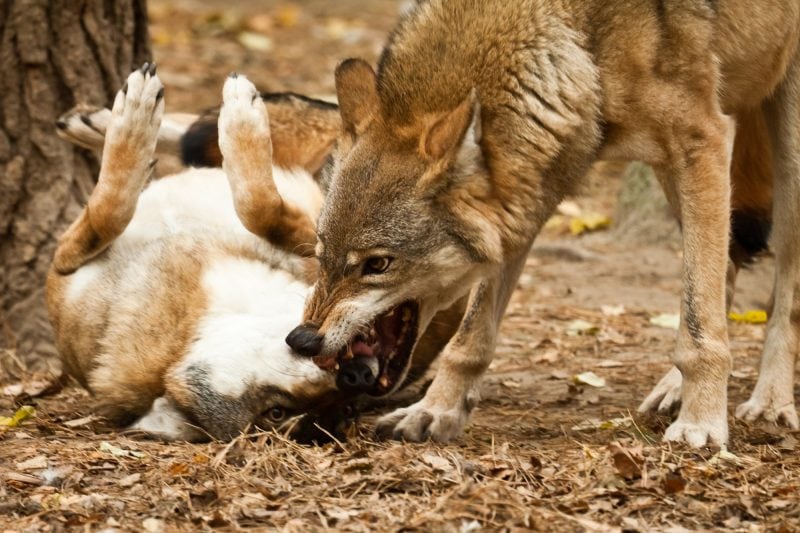
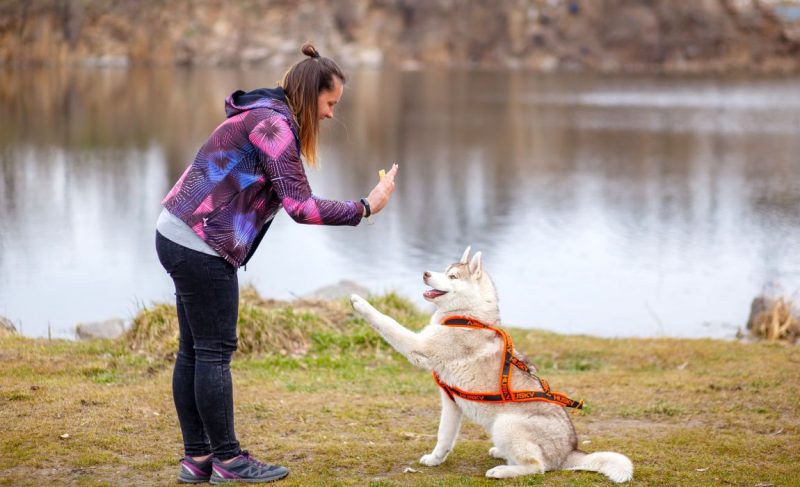

Leave a Comment